
Sofia Costanza Brigida Villani Scicolone, known professionally as Sophia Loren, is an Italian actress, active in her native country and the United States. With a career spanning over 70 years, she was named by the American Film Institute as one of the greatest stars of classical Hollywood cinema and is one of the last surviving major stars from the era. Loren is also the only remaining living person to appear on AFI's list of the 50 greatest stars of American film history, positioned 21st.

George Randolph Scott was an American film actor, whose Hollywood career spanned from 1928 to 1962. As a leading man for all but the first three years of his cinematic career, Scott appeared in dramas, comedies, musicals, adventures, war, horror and fantasy films, and Westerns. Out of his more than 100 film appearances, more than 60 of them were Westerns.
The year 1957 in film involved some significant events. The Bridge on the River Kwai topped the year's box office in North America, France, and Germany, and won seven Academy Awards, including Best Picture.

Two Women is a 1960 war drama film directed by Vittorio De Sica from a screenplay he co-wrote with Cesare Zavattini, based on the 1957 novel of the same name by Alberto Moravia. The film stars Sophia Loren, Jean-Paul Belmondo, Eleonora Brown and Raf Vallone. It tells the story of a woman trying to protect her young daughter from the horrors of war. The story is fictional, but based on actual events of 1944 in Rome and rural Lazio, during the Marocchinate.

Maureen O'Hara was an Irish-born naturalized American actress and singer, who became successful in Hollywood from the 1940s through to the 1960s. She was a natural redhead who was known for playing passionate but sensible heroines, often in Westerns and adventure films. She worked with director John Ford and long-time friend John Wayne on numerous projects.
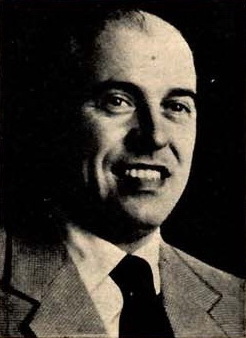
Carlo Fortunato Pietro Ponti Sr.OMRI was an Italian film producer with more than 140 productions to his credit. Along with Dino De Laurentiis, he is credited with reinvigorating and popularizing Italian cinema post-World War II, producing some of the country's most acclaimed and financially-successful films of the 1950s and 1960s.

Henry Hathaway was an American film director and producer. He is best known as a director of Westerns, especially starring Randolph Scott and John Wayne. He directed Gary Cooper in seven films.

Henry George Carey Jr. was an American actor. He appeared in more than 90 films, including several John Ford Westerns, as well as numerous television series.
The Three Musketeers, the 1844 novel by author Alexandre Dumas, has been adapted into multiple films, both live-action and animated.
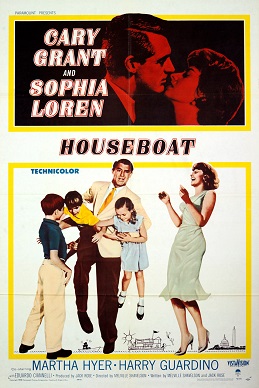
Houseboat is a 1958 American romantic comedy film directed by Melville Shavelson. The songs, "Almost In Your Arms" sung by Sam Cooke, and "Bing! Bang! Bong!", sung by Sophia Loren, were written by Jay Livingston and Ray Evans. It was presented in Technicolor and VistaVision.

Rossano Brazzi was an Italian actor. He moved to Hollywood in 1948 and was propelled to international fame with his role in the English-language film Three Coins in the Fountain (1954), followed by the leading male role in David Lean's Summertime (1955), opposite Katharine Hepburn. In 1958, he played the lead as Frenchman Emile De Becque in the Rodgers and Hammerstein musical South Pacific. His other notable English-language films include The Barefoot Contessa (1954), The Story of Esther Costello (1957), opposite Joan Crawford, Count Your Blessings (1959), Light in the Piazza (1962), and The Italian Job (1969).

Kel Ahaggar is a Tuareg confederation inhabiting the Hoggar Mountains in Algeria. The confederation is believed to have been founded by the Tuareg matriarch Tin Hinan, whose monumental tomb is located at Abalessa. The official establishment is dated to around 1750. It has been largely defunct since 1977, when it was terminated by the Algerian government.
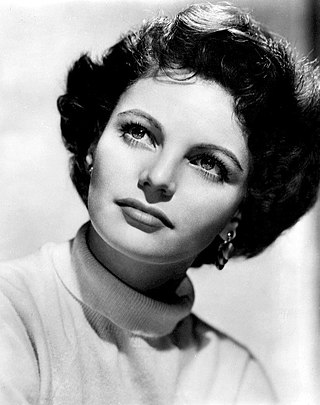
Geraldine Brooks was an American actress whose three-decade career on stage as well as in films and on television was noted with nominations for an Emmy in 1962 and a Tony in 1970. She was married to author Budd Schulberg.
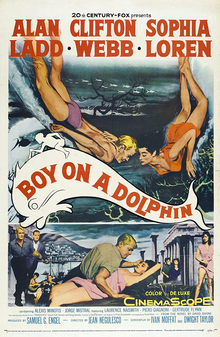
Boy on a Dolphin is a 1957 American romantic adventure film theatrically released by 20th Century-Fox. It is set in Greece and shot in DeLuxe Color and CinemaScope. It was directed by Jean Negulesco and produced by Samuel G. Engel from a screenplay by Ivan Moffat and Dwight Taylor, based on the 1955 novel of the same name by David Divine.

Heller In Pink Tights is a 1960 American Technicolor Western film adapted from Louis L'Amour's 1955 novel Heller with a Gun. It stars Sophia Loren and Anthony Quinn and was directed by George Cukor.

Mimi Gibson is an American real estate agent and a former child actress, from 1951 to 1968.

South Pacific is a 1958 American romantic musical film based on the 1949 Rodgers and Hammerstein musical South Pacific, which in turn is loosely based on James A. Michener's 1947 short-story collection Tales of the South Pacific. The film, directed by Joshua Logan, stars Rossano Brazzi, Mitzi Gaynor, John Kerr and Ray Walston in the leading roles with Juanita Hall as Bloody Mary, the part that she had played in the original stage production. The film was nominated for three Academy Awards, winning the Academy Award for Best Sound for Fred Hynes. It is set in 1943, during World War II, on an island in the South Pacific.

The Story of Esther Costello is a 1957 British drama film starring Joan Crawford and co-starring Rossano Brazzi, and Heather Sears. The film is a story of large-scale fundraising. The Story of Esther Costello was produced by David Miller and Jack Clayton, with Miller directing. The screenplay by Charles Kaufman was based on the 1952 novel by Nicholas Monsarrat. It was distributed by Columbia Pictures.
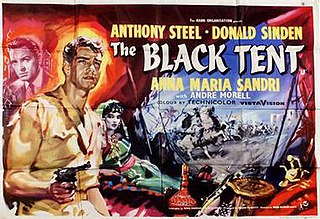
The Black Tent is a 1956 British war film directed by Brian Desmond Hurst and starring Donald Sinden, Anthony Steel, Anna Maria Sandri, André Morell and Donald Pleasence. It is set in North Africa, during the Second World War and was filmed on location in Libya.

Lady L is a 1965 comedy film based on the novel by Romain Gary and directed by Peter Ustinov. Starring Sophia Loren, Paul Newman, David Niven and Cecil Parker, the film focuses on an elderly Corsican lady as she recalls the loves of her life, including an anarchist and an English aristocrat. The ending of the film is very different from the ending of the novel.

















